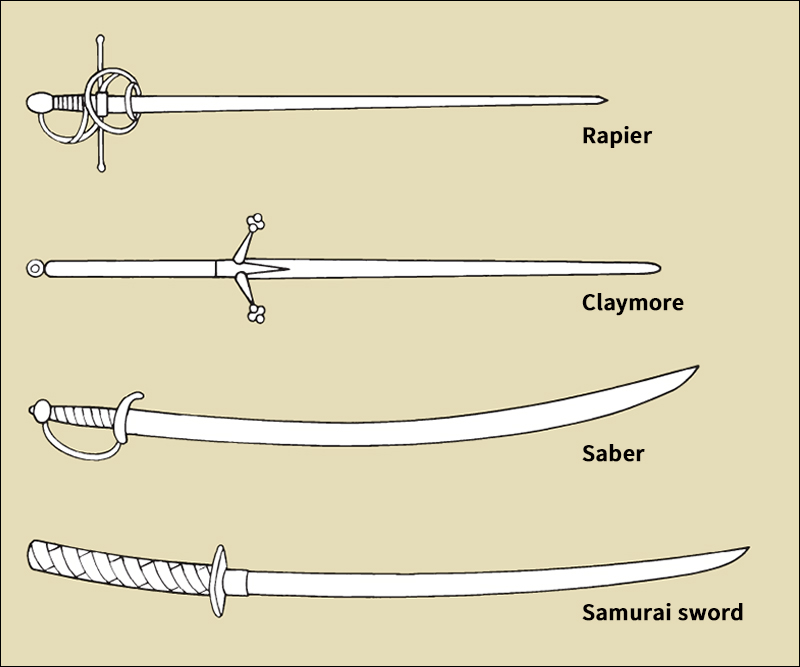Sword is a sharp-edged metal weapon. It is used in hand-to-hand fighting to deliver cutting or stabbing blows.
Swords consist chiefly of a blade and a handle called a hilt. Sword blades have either one cutting edge or two, and they are made in a variety of sizes and shapes. Some blades are broad like that of the Scottish claymore, but others are narrow like that of the rapier. The Persian shamshir, sometimes called a scimitar, has a highly curved blade. But the European saber and Japanese katana, sometimes called a samurai sword, have blades that are only slightly curved. Hilts also vary. For example, the hilts on some of the swords of European Vikings and Japanese samurai warriors are highly ornamental works of art. But the hilt on the Roman gladius is purely practical.

About 3500 B.C., people discovered how to make bronze, and early swords were made of this metal. By about 1000 B.C., swords were commonly made of iron, a metal harder than bronze and so better suited for swordmaking. Most early iron swords were only 18 to 24 inches (46 to 61 centimeters) long. Few armies used them as their principal weapon.
During the Middle Ages, sword makers in Europe and Japan perfected the long sword. Long swords ranged from 3 to 6 feet (0.9 to 1.8 meters) in length, and could be swung with either one or two hands. They were extremely deadly, and they were among the most important weapons in warfare of the time.
By the 1600’s, firearms had been developed and the use of swords declined as a result. However, cavalry soldiers continued to use such swords as sabers and broadswords into the 1900’s. At that time, tanks and other advanced weapons made cavalry itself useless. Today, some military officers still wear swords as a sign of authority. In addition, blunt-edged swords are used in the sport of fencing (see Fencing ).
